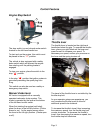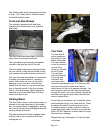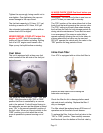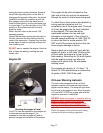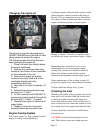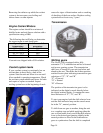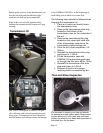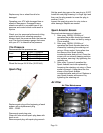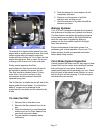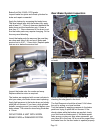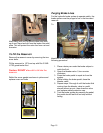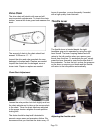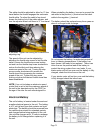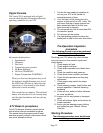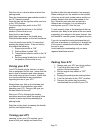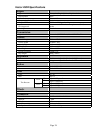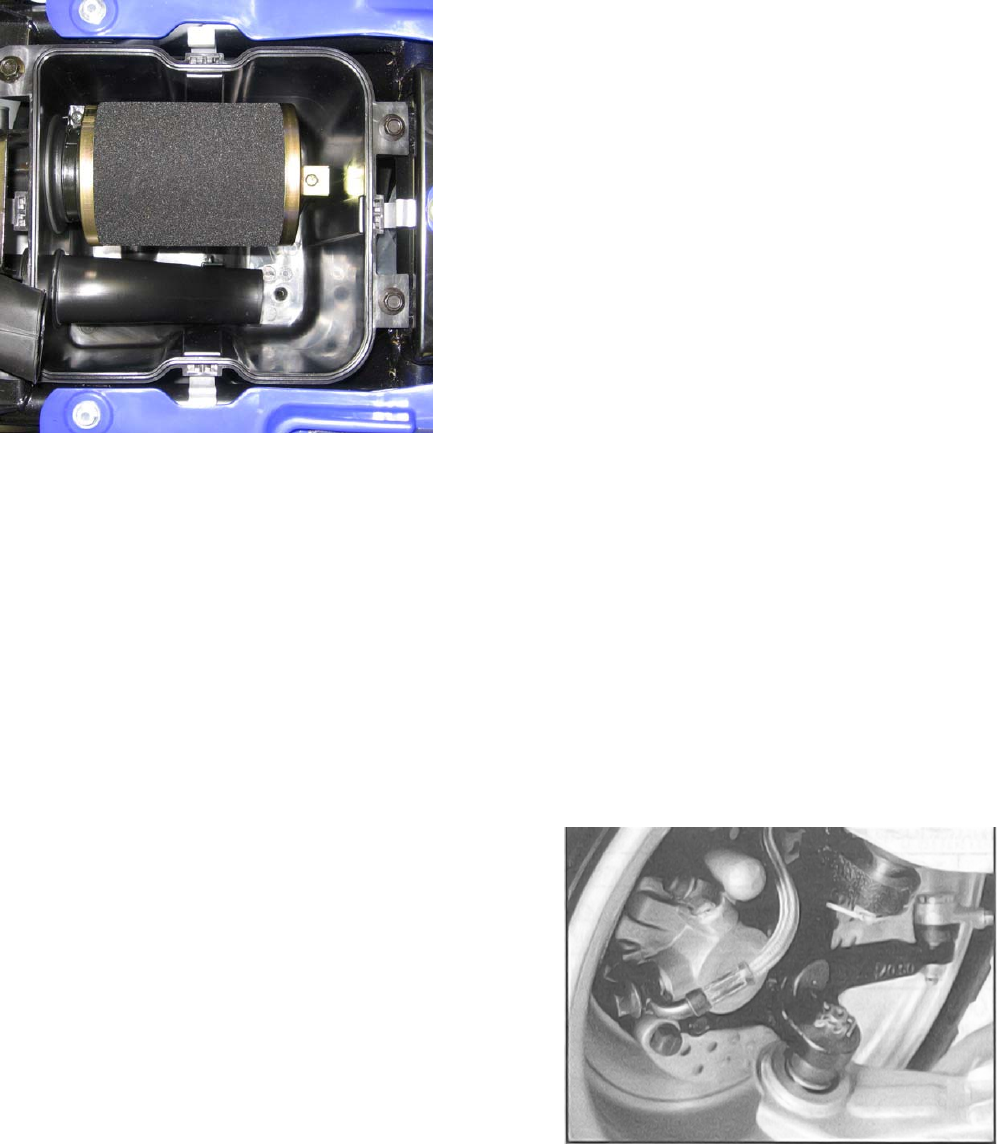
Page 17
To maintain the highest performance from your
engine and to reduce excessive wear that could
cause engine failure the engine requires a
continuous flow of clean air. Air is taken into the
engine through an air filter to clean the air prior
to mixing it with fuel and oil in the carburetor.
During normal operation the filter
accumulates dirt from the air and will need to
be cleaned to maintain the proper air flow.
The filter should be cleaned every 30 days,
more often if you ride in a dusty or dirty
environment and the element should be
replaced every year.
The air filter box is located on the left side of the
engine under the front fender. It is a black box
about 6” square and is attached to the
crankcase with two bolts and the carburetor by
a tube.
To clean the filter
1. Remove the air filter box cover.
2. Remove the filter element from the air
box.
3. Wash the element in a non-flammable
solvent such as Air-Filter cleaner from
your local auto parts dealer.
4. Dry the element completely before
continuing.
5. Soak the element in clean engine oil until
completely saturated.
6. Squeeze out the excess oil until the
element does not drip any oil.
7. Allow the element to dry then reinstall the
element and cover.
Braking Systems
Your ATV unit is equipped with dual front hydraulic
disc brakes and a single rear hydraulic disc brake.
The front brakes are applied by applying pressure
to the brake lever located on the right-handle bar,
while the rear brake is applied by applying
pressure to the foot peddle located in the right
hand foot rest area.
Proper maintenance of the brake system is a
necessary part of safe operation of your unit. The
brake systems should be inspected and tested
before each riding session.
Front Brake System Inspection
Visually inspect the brake lines for any signs of wear.
Inspect the lines for cracks and checking of surface
that could lead to line rupture. Replace all
questionable lines before operating your unit. Check
the fluid level in the master brake cylinder to insure
that the fluid is at least covering ¾ of the site glass.
Add brake fluid as needed.



